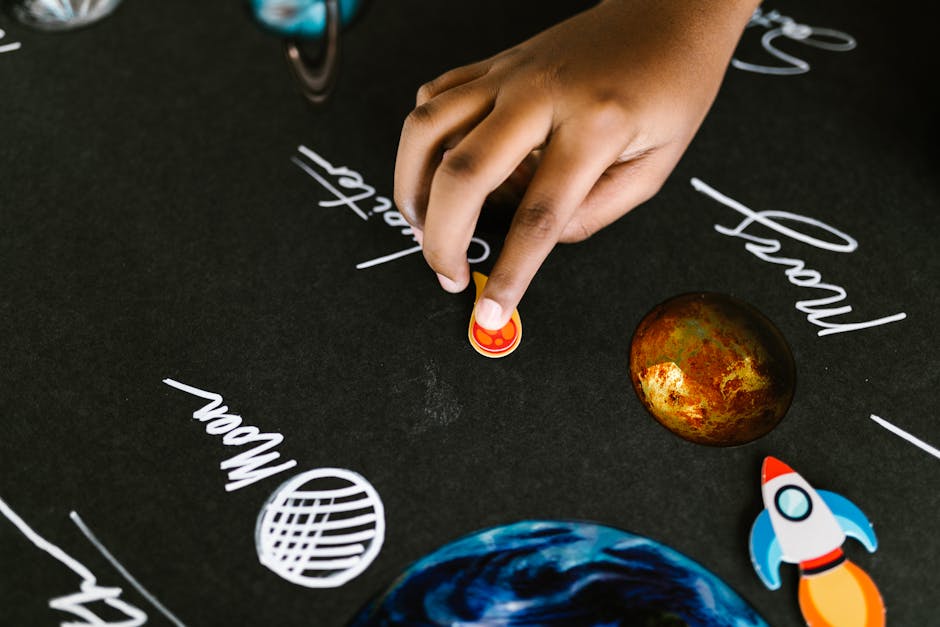Crafting Lessons with Interactive Tools
Have you ever thought about how to make learning more fun? Imagine your students excited about lessons, actively participating instead of just listening. Interactive tools can turn your teaching into an engaging adventure. Lets explore how to craft lessons that spark interest and creativity.
What Are Interactive Tools?

Interactive tools are resources that invite active participation. They encourage students to engage with material rather than passively absorb it. Think of online quizzes, educational games, or even group projects. These tools help students learn by doing, which can lead to better understanding and retention.
For example, instead of reading a chapter in silence, students might use a platform like Kahoot! to answer quiz questions together. This approach not only makes learning enjoyable but also fosters teamwork.
Why Use Interactive Tools in Lessons?

Interactive tools offer several benefits:
- Increased Engagement: Students are more likely to pay attention.
- Better Retention: Learning by doing helps students remember what they learn.
- Collaboration Skills: Students learn to work together, sharing ideas and solving problems.
According to a study by the National Training Laboratory, people retain around 75% of what they learn through practice. that’s much higher than just reading or listening!
How to Choose the Right Interactive Tools?

Not all interactive tools are created equal. Here are a few things to consider:
- Age Appropriateness: Make sure the tool fits your students age and skill level.
- Learning Objectives: Choose tools that align with your lesson goals.
- User-Friendly: Pick tools that are easy for both you and your students to use.
Which Interactive Tools Should You Use?

There are many interactive tools available. Here are some popular options:
- Kahoot! – Great for quizzes and reviews.
- Google Forms: Perfect for surveys and feedback.
- Padlet: An interactive board where students can post ideas.
- Nearpod: Offers interactive lessons with embedded quizzes.
- Flipgrid: Allows students to share videos on specific topics.
Choose tools that resonate with your teaching style and your students’ interests. For example, if your class loves technology, they might enjoy using interactive apps for their projects.
How Can You Design an Interactive Lesson?
Designing an interactive lesson can be simple. Heres a step-by-step guide:
Step 1: Define Your Learning Goals
Start by deciding what you want your students to learn. Be clear about your objectives. For example, if you’re teaching about ecosystems, your goal might be to have students understand different habitats.
Step 2: Select Appropriate Tools
Once you have your goals, choose the tools that best fit. If you want students to collaborate, tools like Padlet or Google Docs work well.
Step 3: Create Engaging Content
Your content should be relevant and relatable. Use stories, videos, or real-life examples. This approach makes lessons more engaging. If you’re teaching about the water cycle, consider using a short video that shows how it works in nature.
Step 4: Incorporate Interactive Elements
Plan activities that require participation. This could be a live poll, a group discussion, or a creative project. For instance, you could have students create a digital poster about their favorite habitat using Canva.
Step 5: Provide Feedback
Feedback is crucial. After each activity, discuss what worked and what didnt. Encourage students to share their thoughts. This dialogue can help you improve future lessons.
Are There Any Challenges to Using Interactive Tools?
Like any teaching method, interactive tools have challenges. Here are a few to consider:
- Technology Issues: Not all students may have access to devices.
- Learning Curves: Some tools require time to learn and may confuse students.
- Classroom Management: Keeping students focused on the task can be tricky.
To overcome these challenges, plan ahead. Ensure all students have access to the technology they need. Take time to teach them how to use new tools before diving in.
Are There Best Practices for Using Interactive Tools?
Here are some best practices to keep in mind:
- Start Small: Begin with one or two tools to avoid overwhelming yourself and your students.
- Be Flexible: Adapt your plans based on student feedback and engagement.
- Encourage Collaboration: Foster a supportive environment where students can help each other.
Remember, the goal is to enhance learning, not complicate it. Keep it simple and enjoyable.
What Are Real-Life Examples of Interactive Lessons?
Here are a few examples of interactive lessons in various subjects:
Science
In a biology class, students can use interactive simulations to explore cells. Websites like PhET provide virtual labs where they can manipulate variables and see outcomes in real-time.
Math
A math teacher might use an online game like Prodigy, where students solve math problems to progress through a fantasy adventure. This approach makes learning math exciting and engaging.
History
In a history lesson, students could create digital timelines using tools like Tiki-Toki. They can add images, videos, and texts to showcase events in a more interactive way.
How Can You Measure Success with Interactive Tools?
Measuring success is key to understanding the impact of your lessons. Here are a few methods:
- Observations: Watch how engaged students are during activities.
- Quizzes: Use online quizzes to assess understanding before and after lessons.
- Student Feedback: Ask students what they liked and what they didn’t.
Gathering this information helps you refine your teaching methods and tools.
Where Can You Learn More?
If you want to dive deeper into interactive teaching methods, check out resources like Edutopia. They offer great insights and strategies for educators. You can read more about interactive learning techniques here.
Conclusion: Ready to Get Started?
Crafting lessons with interactive tools can transform your teaching. These tools not only engage students but also promote deeper understanding. Start small, pick a few tools, and watch your classroom come to life!
Remember to focus on your learning objectives and choose activities that resonate with your students. With a little creativity, youll create an enriching learning environment that students will love.
Now it’s your turn! What interactive tools will you try in your next lesson?
For more tips on engaging students, check out our post on Engaging Students in the Digital Age.
